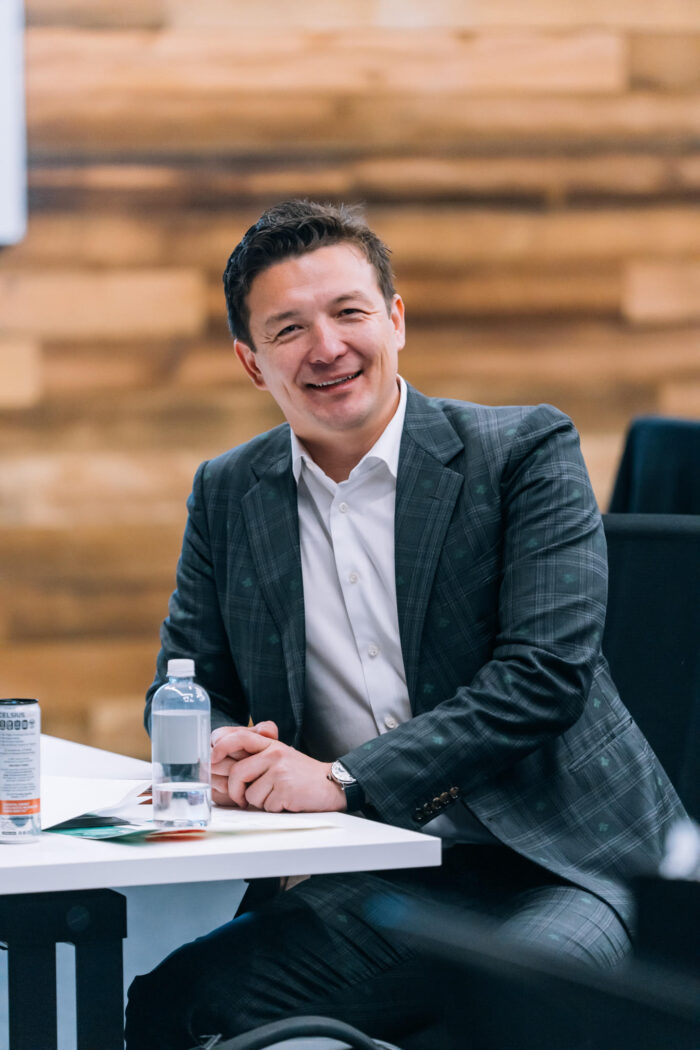The following article was contributed by Anthony Johnson, CEO of the Johnson Firm and Stellium.
The ascent of AI in law firms has thrust the intricate web of complexities and legal issues surrounding their implementation into the spotlight. As law firms grapple with the delicate balance between innovation and ethical considerations, they are tasked with navigating the minefield of AI ethics, AI bias, and synthetic data. Nevertheless, within these formidable challenges, law firms are presented with a singular and unparalleled opportunity to shape the landscape of AI law, copyright ownership decisively, and AI human rights.
Conducting Due Diligence on AI Technologies
Law firms embarking on the integration of AI into their practices must commence with conducting comprehensive due diligence. This process entails a precise evaluation of the AI technology's origins, development process, and the integrity of the data utilized for training. Safeguarding that the AI systems adopted must be meticulously developed with legally sourced and unbiased data sets. This measure is the linchpin in averting potential ethical or legal repercussions. It is especially paramount to be acutely mindful of the perils posed by AI bias and AI hallucination, both of which have the potential to undermine the fairness and credibility of legal outcomes.
Guidelines must decisively address the responsible use of AI, encompassing critical issues related to AI ethics, AI law, and copyright ownership. Furthermore, defining the scope of AI's decision-making power within legal cases is essential to avert any over-reliance on automated processes. By setting these boundaries, law firms demonstrate compliance with existing legal standards and actively shape the development of new norms in the rapidly evolving realm of legal AI.
Training and Awareness Programs for Lawyers
Implementing AI tech in law firms isn't just a technical challenge; it's also a cultural shift. Regular training and awareness programs must be conducted to ensure responsible and effective use. These programs should focus on legal tech training, providing lawyers and legal staff with a deep understanding of AI capabilities and limitations. Addressing ethical AI use and the implications of AI on human rights in daily legal tasks is also required. Empowering legal teams with knowledge and tools will enhance their technological competence and drive positive change.
Risks and Ethical Considerations of Using AI in Legal Practices
Confidentiality and Data Privacy Concerns
The integration of AI within legal practices presents substantial risks concerning confidentiality and data privacy. Law firms entrusted with handling sensitive information must confront the stark reality that the deployment of AI technologies directly threatens client confidentiality if mishandled. AI systems' insatiable appetite for large datasets during training lays bare the potential for exposing personal client data to unauthorized access or breaches. Without question, unwaveringly robust data protection measures must be enacted to safeguard trust and uphold the legal standards of confidentiality.
Intellectual Property and Copyright Issues
The pivotal role of AI in content generation has ignited intricate debates surrounding intellectual property rights and copyright ownership. As AI systems craft documents and materials, determining rightful ownership—be it the AI, the developer, or the law firm—emerges as a fiercely contested matter. This not only presents legal hurdles but also engenders profound ethical deliberations concerning the attribution and commercialization of AI-generated content within the legal domain.
Bias and Discrimination in AI Outputs
The critical risk looms large: the potential for AI to perpetuate or even exacerbate biases. AI systems, mere reflections of the data they are trained on, stand as monuments to the skewed training materials that breed discriminatory outcomes. This concern is especially poignant in legal practices, where the mandate for fair and impartial decisions reigns supreme. Addressing AI bias is not just important; it is imperative to prevent the unjust treatment of individuals based on flawed or biased AI assessments, thereby upholding the irrefutable principles of justice and equality in legal proceedings.
Worst Case Scenarios: The Legal Risks and Pitfalls of Misusing AI
Violations of Client Confidentiality
The most egregious risk lies in the potential violation of client confidentiality. Law firms that dare to integrate AI tools must guarantee that these systems are absolutely impervious to breaches that could compromise sensitive information. Without the most stringent security measures, AI dares to inadvertently leak client data, resulting in severe legal repercussions and the irrevocable loss of client trust. This scenario emphatically underscores the necessity for robust data protection protocols in all AI deployments.
Intellectual Property Issues
The misuse of AI inevitably leads to intricate intellectual property disputes. As AI systems possess the capability to generate legal documents and other intellectual outputs, the question of copyright ownership—whether it pertains to the AI, the law firm, or the original data providers—becomes a source of contention. Mismanagement in this domain can precipitate costly litigation, thrusting law firms into the task of navigating a labyrinth of AI law and copyright ownership issues. It is important that firms assertively delineate ownership rights in their AI deployment strategies to circumvent these potential pitfalls preemptively.
Ethical Breaches and Professional Misconduct
The reckless application of AI in legal practices invites ethical breaches and professional misconduct. Unmonitored AI systems presume to make decisions, potentially flouting the ethical standards decreed by legal authorities. The specter of AI bias looms large, capable of distorting decision-making in an unjust and discriminatory manner. Law firms must enforce stringent guidelines and conduct routine audits of their AI tools to uphold ethical compliance, thereby averting any semblance of professional misconduct that could mar their esteemed reputation and credibility.
Case Studies: Success and Cautionary Tales in AI Implementation
Successful AI Integrations in Law Firms
The legal industry has witnessed numerous triumphant AI integrations that have set the gold standard for technology adoption, unequivocally elevating efficiency and accuracy. Take, for example, a prominent U.S. law firm that fearlessly harnessed AI to automate document analysis for litigation cases, substantially reducing lawyers' document review time while magnifying the precision of findings. Not only did this optimization revolutionize the workflow, but it also empowered attorneys to concentrate on more strategic tasks, thereby enhancing client service and firm profitability. In another case, an international law firm adopted AI-driven predictive analytics to forecast litigation outcomes. This tool provided unprecedented precision in advising clients on the feasibility of pursuing or settling cases, strengthening client trust and firm reputation. These examples highlight the transformative potential of AI when integrated into legal frameworks.
Conclusion
Integrating AI within the legal sector is an urgent reality that law firms cannot ignore. While the ascent of AI presents complex challenges, it also offers an unparalleled opportunity to shape AI law, copyright ownership, and AI human rights. To successfully implement AI in legal practices, due diligence on AI technologies, training programs for lawyers, and establishing clear guidelines and ethical standards are crucial. However, risks and moral considerations must be carefully addressed, such as confidentiality and data privacy concerns, intellectual property and copyright issues, and bias and discrimination in AI outputs. Failure to do so can lead to violations of client confidentiality and costly intellectual property disputes. By navigating these risks and pitfalls, law firms can harness the transformative power of AI while upholding legal standards and ensuring a fair and just legal system.















